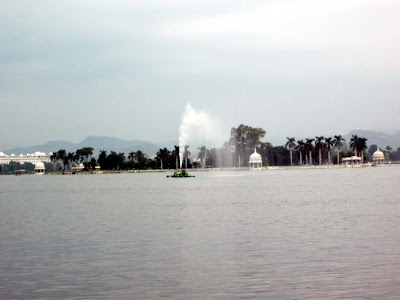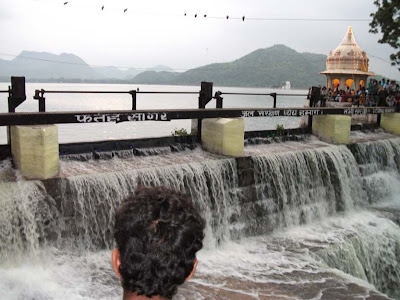Sebi wants tax break on ELSS to stay
Mumbai: Capital market regulator Securities and Exchange Board of India (Sebi) has recommended to the Central Board of Direct Taxes (CBDT) that equity-linked savings schemes (ELSS) should continue to enjoy tax exemption.
In a letter to CBDT, the regulator explained its suggestion, saying the schemes, known as ELSS, are investor-friendly and should, therefore, enjoy tax benefits.
“ELSS is a good product for the small investor. Sebi believes that if ELSS is allowed to give tax deduction benefits, retail investors will benefit immensely,” said a senior Sebi official, who declined to be named.
Sebi’s suggestion follows a proposal by the finance ministry’s revised draft direct tax code to remove exemptions for all such mutual fund (MF) schemes.
If accepted, the move will bring significant respite to the MF industry. More often, retail investors first invest in ELSS to get tax deduction benefits and later on diversify to investing in other schemes if they earn good returns from their ELSS investments. The latter, therefore, acts a medium to channelize investor’s money into equities.
It’s the first Sebi proposal in a long time that would cheer the Rs.6.66 trillion MF industry, which has been reeling under a series of Sebi directives (such as a ban on entry loads and a cap on exit loads) that the funds allege have led to negative sales and the attrition of thousands of agents since August 2009.
Entry load is the agent’s commission that is typically taken out of the total sum to be invested, effectively eating into the investment amount.
An exit load is the fee collected when an investor withdraws money from a fund.
Shishir Jha, commissioner (media co-ordinator) at CBDT, declined to comment on the issue. “We cannot comment on any aspect of the direct taxes code,” he said.
Currently, ELSS and hybrid products such as unit-linked insurance plans (Ulips) are exempt from tax deduction at all points of the investment: during the time of investment, tenure of the investment and redemption of investment. This method of taxation is called the exempt-exempt-exempt (EEE) method.
Both drafts of the direct tax code—in August 2009 and June 2010—left out ELSS as one of the instruments, classified as “permitted saving intermediary”, that would be allowed to offer tax benefits.
Instead, it offered EEE benefits only to the government provident fund, Public Provident Fund, other recognized provident funds and pension schemes administered by the Pension Fund Regulatory and Development Authority.
It also recommended a tax rebate for approved pure life insurance products, which includes only term assurance products and life insurance products where the annual premium is less than 5% of the sum assured. Annuity schemes are also beneficiaries of the EEE tax treatment.
A large number of retail investors in MFs pick ELSS only for tax savings purposes. Under current norms, investments of up to Rs.1 lakh a year in tax-saving schemes are exempt from tax on annual income.
There are at least 48 ELSS schemes in the market. During the fiscal year ended March, the MF industry sold ELSS scheme units worth Rs.3,601 crore, 8.3% higher than the previous fiscal.
During 2007-08, when the equity markets peaked, the industry had sold ELSS scheme units worth Rs.6,448 crore. There are 40 fund houses with total assets under ELSS schemes at Rs.25,257 crore at the end of July.
Though the proportion of assets under ELSS compared with the total assets is low, thousands of retail investors enter the MF industry solely through ELSS investments, said the chief investment officer at a mid-size bank-controlled MF.
“ELSS sees a lot of attraction from retail investors because of the tax break. If the tax benefit is taken away, these funds may lose their sheen completely. Moreover, since these funds are structurally similar to Ulips, both instruments should be treated on par in terms of taxation,” he added.
In the last quarter of 2009, when all MF schemes were facing redemptions, only ELSS schemes were recording inflows, said the chief executive of a newly launched fund house. “These schemes have collected incremental money during the rough phase of 2009. ELSS investments not only bring in fresh inflows, but also ensure long-term money for the industry. Such investments are made for at least three years currently,” he added.
None of the officials wanted to be named.
Between August 2009 (when Sebi banned entry load for MF investments) and June 2010, MFs have seen redemptions worth Rs.70,169 crore against just Rs.33,510 crore between August 2008 and July 2009. Despite such huge redemptions, fresh money also flowed in, leading to a net outflow of Rs.7,529 crore.
The Association of Mutual Funds in India (Amfi), the industry lobby, too had approached CBDT earlier, proposing to include ELSS in the tax exemption category. “We have already taken it up with CBDT. ELSS schemes have been very popular with retail investors and they invest in them for tax deduction benefits,” said A.P. Kurian, chairman of Amfi.
anirudh.l@livemint.com








